
(France 1991 239m) DVD1/2
We want truth in painting
p Martine Marignac d Jacques Rivette w Pascal Bonitzar, Christine Laurent, Jacques Rivette story “Le Chef d’Oeuvre Inconnu” by Honoré de Balzac ph William Lubtchansky ed Nicole Lubtchansky m Igor Stravinsky art Emmanuel de Chauvigny
Michel Piccoli (Edouard Frenhofer), Jane Birkin (Liz), Emmanuelle Béart (Marianne), Marianne Denicourt (Julienne), David Bursztein (Nicolas), Giles Arbona (Porbus),
Jacques Rivette is probably the most individual director of the acknowledged greats of the nouvelle vague, a director of a purely personal vision, one which may alienate as many as it entrances but which remains wholly original. His 1991 study in the creative artistic process qualifies as a Rivettian subject in more ways than one. Not only is the film itself one to split audiences down the middle, but so too is the eponymous painting itself. In truth, the finished article (or should one say articles, as he bricks his original up rather than have people see it) is not one that I could say I really appreciated remotely enough to confer with the notion of his being a genius, but it’s the process itself that is under the microscope here. Well, that and the human soul.
One can really forget the plot here (painter is inspired to finishing a masterpiece abandoned ten years previously by the arrival of a young friend’s free spirited mistress) and revel in the subtexts. Many column inches were devoted to Béart’s endless nude scenes and they are probably the most baring (and necessarily so) scenes of nudity in movie history. As Béart said at the time of the film’s release, this is not about nudity in the conventional sense, but rather about baring your soul through your body. It’s no coincidence that Béart did not actually appear nude on screen for the best part of a decade afterwards, for her brave performance here must have taken a lot out of her. Rivette bares her as Piccoli bares Marianne. “I’ll break you to pieces” Frenhofer says, “I’ll get you out of your body.” At first she is nervous of him, then contemptuous as he contorts her on a stool, work bench, chaise longue and a rug to get the right pose. Finally, however, she is the strength, pushing him on when he’s on the verge of quitting, parading around determinedly if randomly in her dressing-gown like Cassandra pacing the walls of Troy, an outburst seemingly forever on the verge of being released from her lips. Marianne (the name of the French national heroine who Béart was once the face of, following in the footsteps of Bardot and Deneuve and succeeded by Laetitia Casta) is capricious, inquisitive, beguiling, mischievous and sensual. She is everything that a belle noiseuse (beautiful troublemaker) should be. Béart in her turn is magnificent; raw and dangerous, tender and loving, ultimately emotionally beaten and bruised. In spite of her excellent work in numerous other films (such as Time Regained and Sautet’s Un Coeur en Hiver), it’s her greatest performance, one that confirmed her (with Gong Li) as the greatest actress in nineties world cinema. Yet it’s hard to also overlook the contribution of Piccoli as the demanding artist. Too often he seems to have been more interested in working for directors he admires than actually playing great parts, but this is his finest hour, too. He may be a harsh taskmaster to his models, observing “if I go the whole way, there’s blood on the canvas” and admitting he likes to break down his models like a child dismantling a toy. Yet in the end it’s as much his blood on the canvas as his subject’s. By the end, Birkin refers to him as dead, and in some ways he is. That’s the price of his art.
Even so, this is Rivette’s film, his greatest to these eyes, a film whose intricacies and subtleties can lead to numerous interpretations. It’s also beautifully shot by regular collaborator William Lubtchansky in his preferred academy ratio, taking wonderful advantage of the Languedoc landscape and the churchlike walls of the studio. It perfectly encapsulates the struggles of creation to an artist, as well as the quintessence of how the French are viewed by outsiders, as when two English tourists watch Béart and Bursztein retire upstairs to make love soon after meeting and whisper to each other “what do you expect?” In reply, one can only say “greatness.”





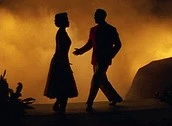
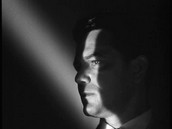

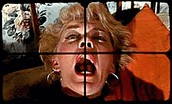

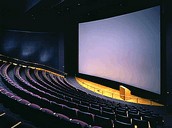

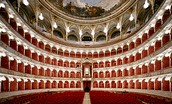






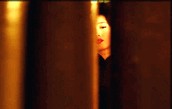

 Click on names for archives
Writers/Founders
Click on names for archives
Writers/Founders
This film sounds very much like another film about an artist breaking as the price of creating. Lisa Choladenko’s HIGH ART (in my top 10 of the year). Was wondering, Sam told me you really weren’t crazy for it, what you thought of that film. Also, aside from Gong Li and Ms. Beart, I was also wondering which other ACTORS and ACTRESSES you’d rank high for this decade of 1990. I haven’t seen any Keislowski work on your count, and I happen to think that both Juliette Binoche (BLUE) and Irene Jacod (RED) would rank as some of the best in this decade. Also have Emily Watson (BREAKING THE WAVES, HILLARY & JACKIE) and Frances McDormand (FARGO) ranked very high as well. Your thoughts? Who would be the gents you’d list???
Sorry, I didn’t mention the gents below, Dennis…but it’s difficult to say. Tony Hopkins would be there, but he only really devoted himself to film in the 90s. I prefer to take actors and actresses of a younger generation. Of the younger generation, Day-Lewis did good work, Auteuil, Turturro, Spacey, Leung, Fiennes, even Ed Norton in the closing years.
I saw this not too long ago, the first film I’ve seen by Rivette, and was mighty impressed. Beart was just terrific. The transition of her character as Frenhofer stripped her soul bare and she went through a forced process of self-discovery was just a revelation, a very subtle performance that just got better and better as the movie unfolded. I thought Piccoli’s performance was easily the equal of Beart’s, maybe even better. He was her master, her mentor, almost a spiritual guide. His ruthless perfectionism and the frustration it caused for him was wonderfully conveyed. But in the end when he walled up the finished painting and offered a hastily painted inferior substitute because he had seen how destructive the truth he captured on canvas had been to Liz showed his essential humanity. Since we never see the real painting (a wonderful touch since it left the exact notion of the work’s greatness up to the viewer’s imagination), I don’t think we can say with certainty whether it was a great work or not. I think we were intended to believe it was or at the least that Frenhofer thought it was. Birkin shouldn’t be overlooked in the acting accolades either. Her character wasn’t as forceful as Beart’s or Piccoli’s, but it made nearly as strong an impression and was a most effective contrast to those two more ego-centered people. As an onlooker she was rather like a stand-in for the viewer. The direction was wonderfully straightforward and unhurried and Rivette gave us a really vivid sense of the house and studio, which were so familiar by the end of the movie that I felt I had spent a few weeks there rather than 4 hours. I did have a few reservations about the movie, though. I found it a bit too long–maybe half an hour or so. The first part could have been pruned. Watching Frenhofer work was fascinating, but Rivette seemed to labor the point that he was struggling at first with the painter’s equivalent of writer’s block. Once he found his stride, the film really picked up. Marianne’s boyfriend Nicolas seemed underdeveloped and what he hoped to gain from her sitting for Frenhofer rather vague, and I didn’t see the point of introducing his sister as another character late in the film. Nicolas could easily have served the function of being Liz’s sounding board and in the process could have been filled in more thoroughly. For me these things keep the movie from being an unequivocal masterpiece. But except for “Lust for Life” (I know you don’t agree with that, Allan) I’ve never seen as good a movie depiction of the artistic process. And the emotional and physical interaction between Frenhofer and Marianne made a deep impression on me, one I’ll never forget. Overall, a really satisfying film and an excellent choice for the countdown.
It seems foolish to consider ‘Lust for Life’ in discussion with this film. But RD if you like it, the more power to you.
Film’s about ‘the process’ that I would watch alongside this one are: Scorsese’s ‘Life Lessons’ (I still think this and ‘Taxi Driver’ are his best films), and Tarkovsky’s ‘Andrei Rublev’. I’d maybe put Jarman’s ‘Caravaggio’ in there to as I am a great fan of Jarman’s.
Another super obscure gem that I like is a documentary by David Sutherland on the American painter Jack Levine titled ‘Portrait of an Artist Levine: Jack Levine Feast of Pure Reason a David Sutherland Film’. It’s only on VHS but it’s fantastic, and you see Levine actually sit down and begin a portrait of his daughter. He also takes in a Red Sox batting practice and he talks about wanting to be to painting what Ted Williams was to him (and hitting). It’s sad at times (he reflects on his late wife), funny, and inspiring. It can often be found in library or school educational collections.
It should be assumed to everyone but Levine is an absolute master (still alive at 94), though he’s criminally overlooked by many contemporary art lovers.
Great review of this film too, Allan. Your enthusiasm shows for both the film and for Rivette. I think you may have talked me into bypassing sleep to watch the entire 239…
One of the great responses that typify this super-blogger named R.D. Finch. Yes, I can add and I can embellish, and I can be specific, but why bother. It’s Thanksgiving and I just wanted to say thanks R.D. for your usual bar-raising discussion.
That said though, I tend to agree with Jamie that LUST FOR LIFE isn’t anywhere near this film in any regard.
In general, Rivette is criminally neglected Stateside at least in comparison to Europe, as witnessed by Sam having never seen a Rivette before I got him onto him – and he’d seen most things. La Belle Noiseuse, despite the extended length, is far more accessible than the iconic 60s and 70s Rivettes, and it’s one of the great films of recent times.
Dennis, I’d put Béart and Li top of any list of 90s actresses. In the 90s Béart had La Belle Noiseuse, Un Coeur en Hiver, L’Enfer, Nelly et Monsieur Arnaud and Time Regained. Li had Ju Dou, Raise the Red Lantern, The Story of Qiu Ju, Farewell My Concubine, La Peintre, Great Emperor’s Concubine, Shanghai Triad and Temptress Moon. Sure, Binoche and Watson would rank high for one or two performances, as indeed would Winslet, Thompson, Bonham Carter, Cheung, Leigh, Richardson, McDormand. And it’s a bit of a misnomer when I say 90s world cinema as I wasn’t counting English language really – world cinema being used here as a term for all foreign cinema.
If including US/UK work, then Julianne Moore would be up there with them with Short Cuts, Vanya on 92nd St, Safe, Boogie Nights, The Big Lebowski, The End of the Affair, An Ideal Husband and Magnolia. Yet if being honest, I’d still have Béart and Li slightly ahead.
You say in this review that this is your favorite Rivette… though one of his topped the 70’s whereas this is just 11 for the 90’s.
So is this a matter of subjectively it is your favorite but objectively you concede better films, or is the 90’s that superior to the 70’s, ect..?
I hope you follow the meaning of my question so you are able to answer. Thanks.
Yes, La Belle Noiseuse remains a favourite because it’s the film that introduced me to him. I think Duelle is his best, but much as I love it, when it comes to favouritism, it’s hard to repeat LBN.
With all due respect the reason why I didn’t get around to Rivette until the time I met you (fiive years ago) really has nothing to due with American neglect, but more to do with the fact that I just didn’t get to him until that time. There are so many films zand directors to examine, and what with opera, theatre and music on my plate, there is just so much time in a day. I don’t make claim to having seen everything by everyone, and exposure to cinema is ongoing. In film meccas like New York City, Rivette has been a mainstay at the Film Forum for years, and all serious American film buffs have availed themselves on a regular basis. His works also placed prominently on the ten best lists of many American critics.
With all due respect, old boy, I mentioned Jacques Rivette ont he phone to you and your response was of one you’d never heard of. Get off your high horse.
Get off my high horse???
Did you even bother to read what I just wrote??
I gave you credit for introducing me to Rivette, but I also added that I just didn’t and couldn’t get around to him at that point in time. Is Rivette some kind of secret in the US? Every serious cinephile here has studied him for years.
My issue here was your comment that Americans were in the dark, when in fact the film buffs worshipped him.
You’re introducing me to Rivette’s work has nothing to do with the state of affairs in America, where many were and are still singing his praises.
BTW, this site is (finally) NSFW. LOL
Jamie, just thinking the same thing! Must remind myself not to visit Wonders during lunch break today… ha, ha
Well, there was a caption I took from Inferno of First Love that drew censorial ire from Kaleem Hasan who declared a blog needs to be PG. I agree to a point, but in certain cases I believe it’s a best illustration – the cap should illustrate the film the best way it can. I mean, Ai No Corrida had a lot more explicit stuff but my cap wasn’t explicit at all, but with La Belle Noiseuse to pick any other cap than one of Béart posing would have been just wrong. So I just picked one that really was only PG-13, in that it’s purely desexualised, as well as being a pose that perfectly illustrates the truly bared nature of Béart’s character beyond the physical. The only other time I wanted to use a nude shot was of Bardot in Le Mépris as that opening shot is not just iconic but was symbolic of the film, but realising the ire I would get I chose another which was nearly as good. TBH, I don’t see a problem with nudity anyway, and many film sites don’t either – check so many blogs, check DVD Beaver, they don’t shy away in their caps.
As for NSFW, well I only visit the site at work for very occasional 30 sec visits and leave commenting to lunch breaks like now or evenings, as I’m sure most people do.
True, but my lunch break is usually taken in an area where fellow employees, including the boss, walk by so let’s just say I’m glad I checked this one out in the morning!
Great writeup as usual, Allan. Obviously, I agree with you about this film, which is really just astonishing in so many ways. I’ve always thought Beart was a simply amazing actress, with an electric screen presence: when she’s onscreen, even in otherwise mediocre efforts like Chabrol’s L’enfer, it is impossible to look away. I agree that La belle noiseuse is quite possibly her finest performance, capturing that interplay between ferocity, sensuality and mischievousness that is at her core. I think her essence is actually best portrayed in a single shot from another Rivette film (her Mona Lisa smile at the end of History of Marie and Julien) but her performance here, as a whole, is her most spirtually and emotionally naked, beyond her physical nakedness.
I also love the way the film captures the process of painting. I’ve seen people complain that the actual art in the film isn’t very good, and I wouldn’t disagree I guess, but that seems beside the point. Rivette does an excellent job of capturing the physical process of painting and drawing in a way few films ever do — Peter Watkins’ Edvard Munch is the only non-documentary I can think of that’s better at it. The film’s soundtrack is dominated by the harsh scratch of Frenhofer’s pens and brushes on paper and canvas, and the camera patiently observes the way lines and forms develop and take shape only to morph into something else or be aborted for another attempt. As a document of what making art looks like and feels like, this film is marvelous.
Ed, the process of painting as you aptly put it, is really what enraptured me with this film. The scratching on the canvas is ingrained in my mind, and what one would have thought would be an excrutiating bore was oddly fascinating. I do believe it’s his greatest film, and I’ve seen the vast majority of his catalogue to this point.
Lovers of the film of course can further access your own magisterial review of September 16th to sit up there with Allan’s:
http://seul-le-cinema.blogspot.com/2009/09/films-i-love-43-la-belle-noiseuse.html
There is one other Rivette film that arguably can be considered as great as this one, and it depends on what day of the week I maight be asked to name the top one, and that’s CELINE ET JULIE VON EN BATEAU. But I know we have exhaustive discourse on this director on other threads and Allan and nEd have favored some others as well.
Couldn’t disagree with much of that, Ed.
No, Allan, personally I don’t think the 90’s had better films than the 70’s. But, like all decades, there are those rare masterpieces that contain element that achieves excellence. I am often smitten or totally floored by the ones that sneak up and surprize. Case in point, BREAKING THE WAVES. That film came out of nowhere and stunned me. Tight direction and writing, cinematography and choice of music. Top of all that, you have this titanic performance by Emily Watson that drives home the directors ultimate vision. Actually, I concur on your choices; I’d just switch the order a little. Watson, for me, gave the best turn of the decade. As for the guys, again agreed, but while I think Day-Lewis gave some great performances, I don’t think he really moves into gargantuan form till the 2000’s and most notably with THERE WILL BE BLOOD.
It’s my impression that Rivette is pretty much undervalued everywhere, not just in America. He’s considered an obscure figure in comparison to the other French New Wave directors: he has always worked at a slower pace than any of his contemporaries, and has made films that don’t conform as easily to established ideas about genre or narrative. Not that I’m saying the other New Wavers were simple or inferior, just that their films gave audiences and critics more to easily latch onto, even if just on a surface level; Rivette has never really provided those comforts. Sure, serious film buffs know him, but even then he’s often considered a peripheral figure, one for the hardcore only.
Absolutely. I definitely agree with what you say here Ed.
It’s all to do with what the populace knows. I just read more film references tomes than Sam that weren’t just critical catalogues. Rivette is only shown in arthouses around the world, but he’s at least known to serious filmgoers. It’s really disgraceful that anyone should need introducing to him, his neglect is shameful.
He’s made two of the great films of this decade as well. “Va Savoir” and “The Duchess of Langeaise”. He’s still going strong. A true master.
Indeed Ari. The latter was one of my favorite films of its release year.
Apropos of nothing, except that I’ve been watching several acclaimed 00s documentaries lately, I notice that Allan has included very few documentaries on his lists up to now (none from the 90s). While one could say that makes sense, I wonder if he will stick to this method in the 21st century – where, at least in America (which, even with Allan’s catholicism has tended to hold the edge on most decade lists) nonfiction films have certainly had a stronger decade than fiction films, and arguably that’s not just relative. I’ll look forward to finding out…
Yes, Beart did a creditable job here, although for me her most stunning performance was in The Heart In Winter–when her fierce intensity and depth were matched by Auteuil. For me, the problem with La Belle Noiseuse is that Beart’s body does a lot of the acting for her. Her constant nudity in the film has been called bold; personally I think it was a distracting and crassly obvious choice, and that a good portion of the audience were probably goggling at her below the neck when they should have been paying close attention to her expressive eyes and hands…and to the old painter. An actress in this role could have been glimpsed through a scrim, half-kimono’ed, or even wearing bedsocks and would still, if she was good enough, have knocked a viewer off his chair with her maddening sensuality.
That said, I’ll admit that Beart’s reaction to the finished picture, at the end, is flawless–transmitting her shame, pain and rage at what she sees as the painter’s piercing indictment of her shallowness, something stunted within the beautiful body. And I’ll freely admit that I’m shallow enough to have wanted to SEE the picture we’d all been virtually sweating over with the old painter, brush stroke by brush stroke, for three hours!
For those of us who have seen Beart’s more recent pictures there may also be a element of elegy in La Belle Noiseuse. The sad truth is that she’s obviously had something done to her face, and it turned out badly. I think it’s proper to mention this, because an actor’s canvas is her face. I wish so much that Beart had looked about her and seen all the great French actresses who sailed triumphantly into their middle years without resorting to scalpels and injections. Yes, they aged, but their faces never lost their integrity.
She’s undoubtedly had surgery, Margaret, and not just to the face, but I can’t really agree with the statement about the nudity being unnecessary, being as it was completely desexualised. The sort of people who just want to look at actresses naked would be unlikely to take out a 4 hour movie which they would feel was about as exciting as watching paint dry. Those people really paying attention would almost not think about the nudity after a few minutes.
Too much is made of nudity in the US, far too much. What Béart showed is that her physical beauty was only skin deep and the real probing analysis, the real hurt, came from inside her. She may have been physically naked, but that was dwarfed by how emotionally and psychologically naked the film left her character. It was a miraculous performance. Certainly her best, though I dont deny Un Coeur en Hiver was a great performance, as it was.
Allan, we’ll probably never agree about which is Beart’s greatest role. Forgive my plain speaking. I think that viewers have been flummuxed into wild Bravas of admiration for Beart in La Belle Noiseuse because of her perceived boldness and risk-taking in being buck naked for much of the film, and present in almost every scene for its four-hour length. As you’ve said, Americans are far too easily impressed by nakedness. Personally I think there is no risk involved in an extremely beautiful European woman being nude in a film which will be viewed in art houses; and as to the length of the film, the very good job she does here for four hours is not necessarily better than the soaringly magnificent job she does for less than two in The Heart In Winter. Quite the contrary.
I also think there is a falsity in the assumption that La Belle Noiseuse has something broadly conclusive and applicable to tell us about the creative process. It deals with one creatively impacted, wildly moody, borderline-personality-disordered, ancient painter–possibly of genius (but are we ever really sure of that?)– who is also suffering from very real health problems. My essential reservation about La Belle Noiseuse is that its assumptions are inflated. The film does not (because it cannot) tell us something which is always and everywhere true of creative people. It tells and shows us the methods and internal monsters of one tortured old painter. Period. Other painters, writers, dancers, and so forth, have their own methods and their own monsters.
This film has a very genuine claim to be considered Rivette’s greatest. I would agree with Allan that it is Beart’s greatest role. It is certainly her ‘bravest’ and one cannot think of too many parts to match this one on these grounds. I only regret that Allan did not find a little space to talk about Divertimento here.